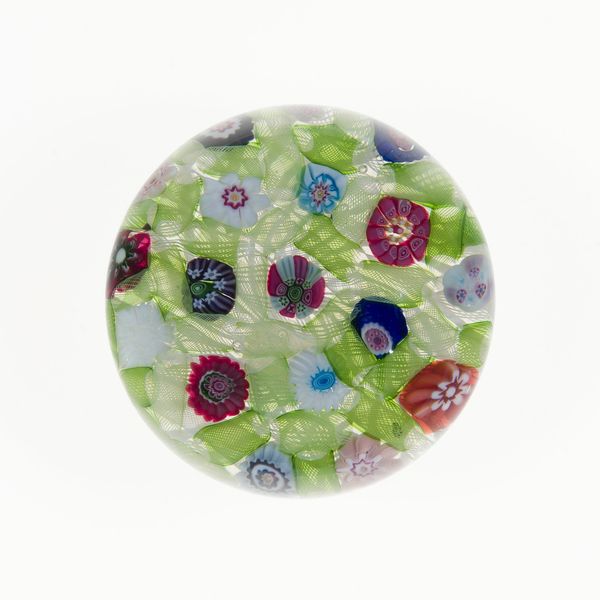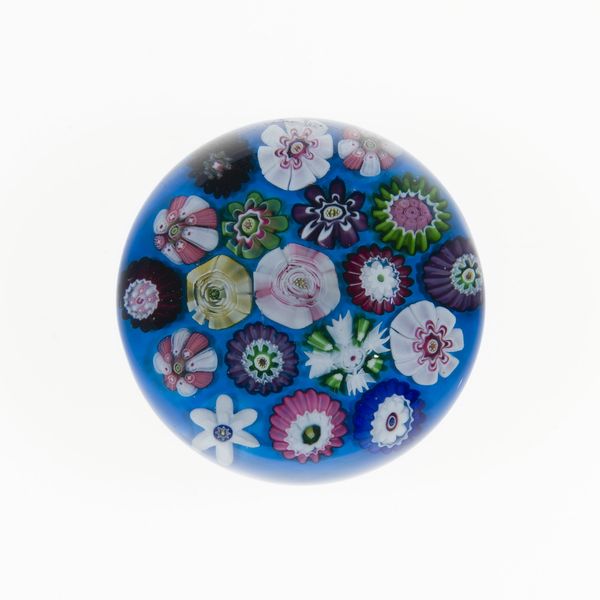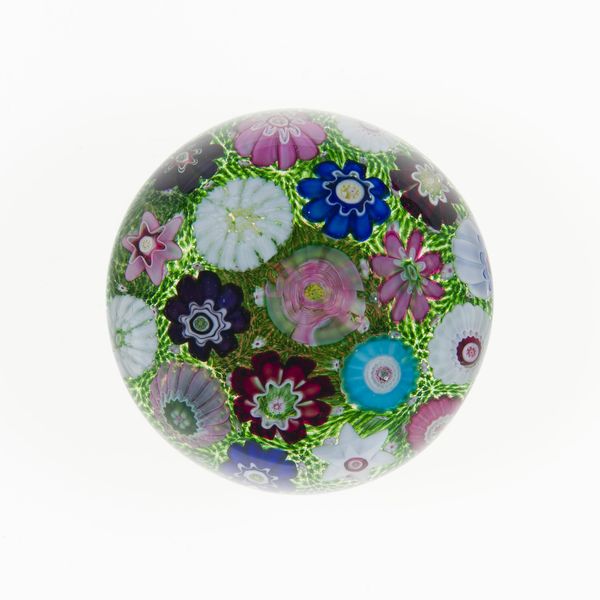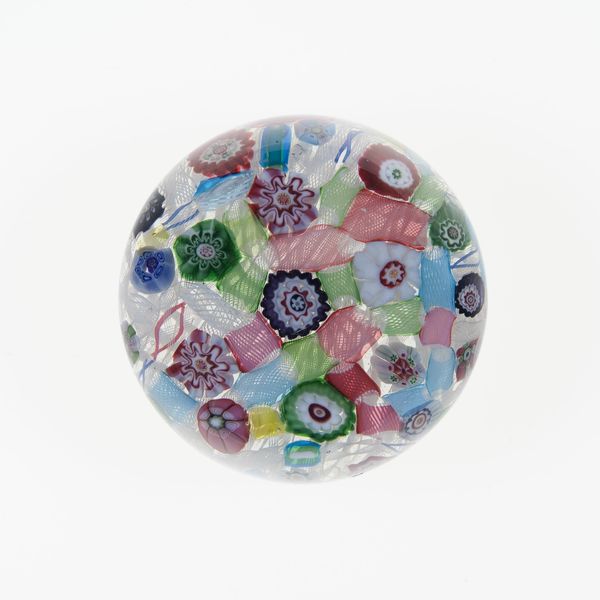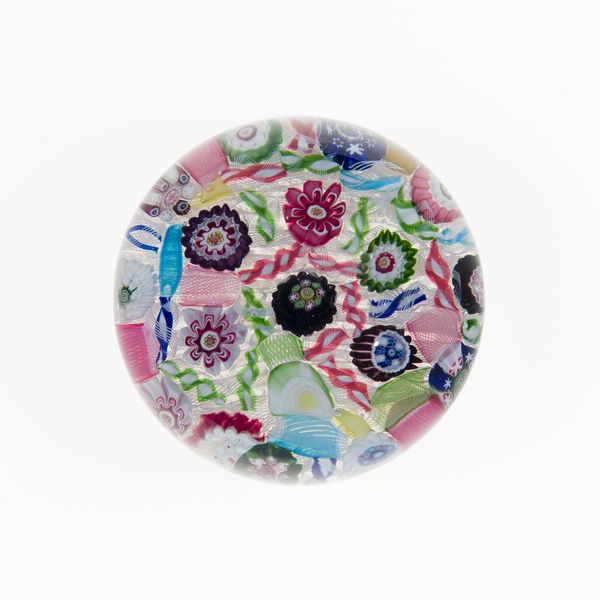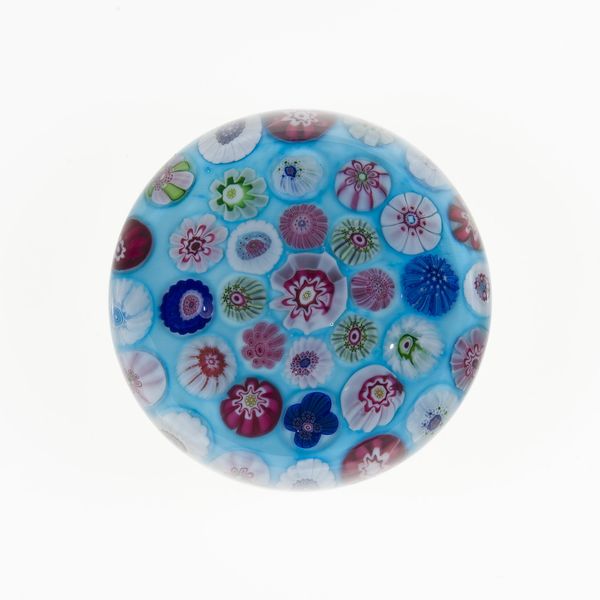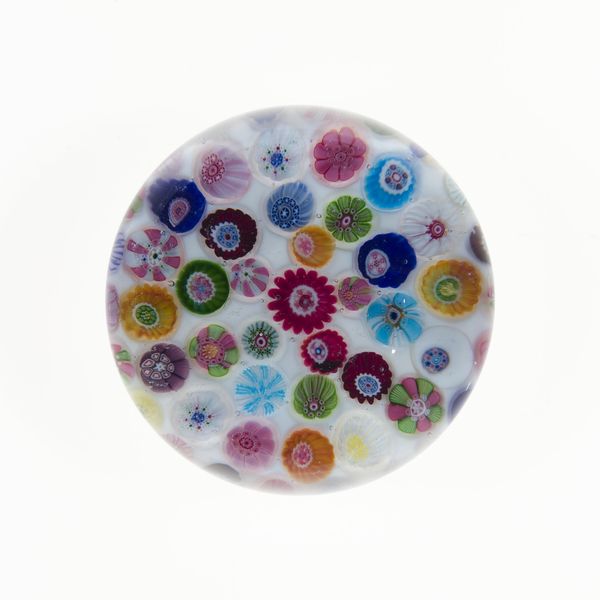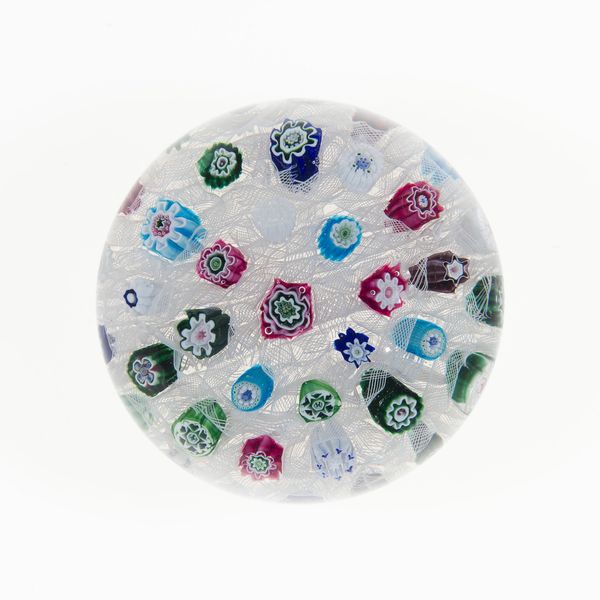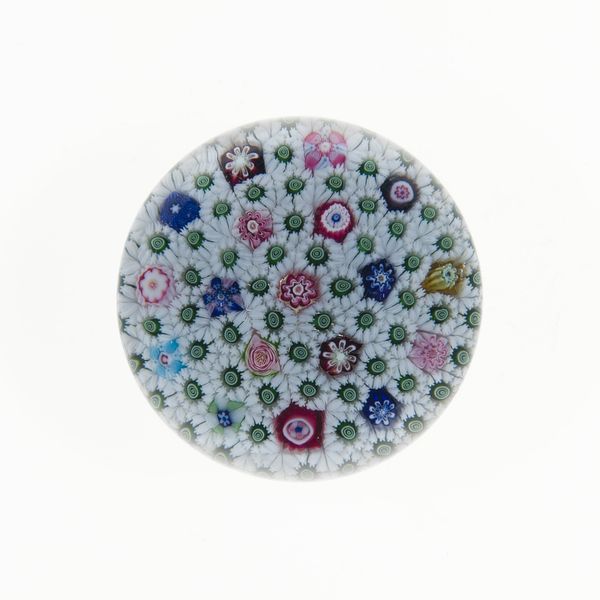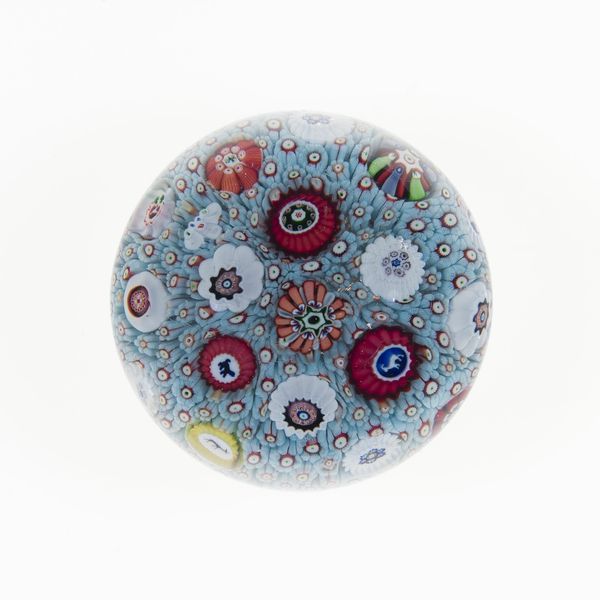
paper, glass, sculpture
#
paper
#
glass
#
sculpture
Dimensions: Diam. 7 cm (2 3/4 in.)
Copyright: Public Domain
Curator: Here we have a captivating "Paperweight" crafted sometime between 1845 and 1860 by the Clichy Glasshouse. It's currently held in the collection of The Art Institute of Chicago. Editor: My first impression is just pure delight! It’s like gazing into a miniature, perfectly preserved garden. The detail is astounding, especially for a functional object. Curator: Absolutely. Thinking about context, these paperweights emerged during a period of significant industrial and social change. This would have been a luxury item. Editor: Precisely. The clustering of the floral motifs holds rich symbolism for the Victorian Era. There's an embedded cultural language that invites interpretation through psychology, even. The paperweight form feels fitting; in a way, it crystalizes the fleeting quality of life and beauty, similar to momento-mori practices. Curator: Yes, the practice of floral arrangements were significant in that era, and speaking of its function, to weight the paper down may seem to suggest a gesture of restriction. At first glance, it may appear like the complete opposite as one beholds the naturalism that the bouquet presents. Editor: I can see your reading through a social context of restraint, but it also calls upon a broader sense of "nature being caged". This image definitely speaks to our own complex and continuing relationship with the world. Do we "protect" the world through preservation or further destroy it through confinement? Curator: That's a very relevant association, connecting art history with contemporary environmental dialogues, highlighting our cultural values through symbols and preservation! It reminds me about ongoing conversations about colonialism too. Editor: A poignant question embedded within something so seemingly innocent! Curator: Definitely worth contemplation for those considering the complex dialogues around social narratives and cultural memories. Editor: Indeed, I will be leaving here wondering about how "decorative objects" may offer an insight of the "every day."
Comments
No comments
Be the first to comment and join the conversation on the ultimate creative platform.
